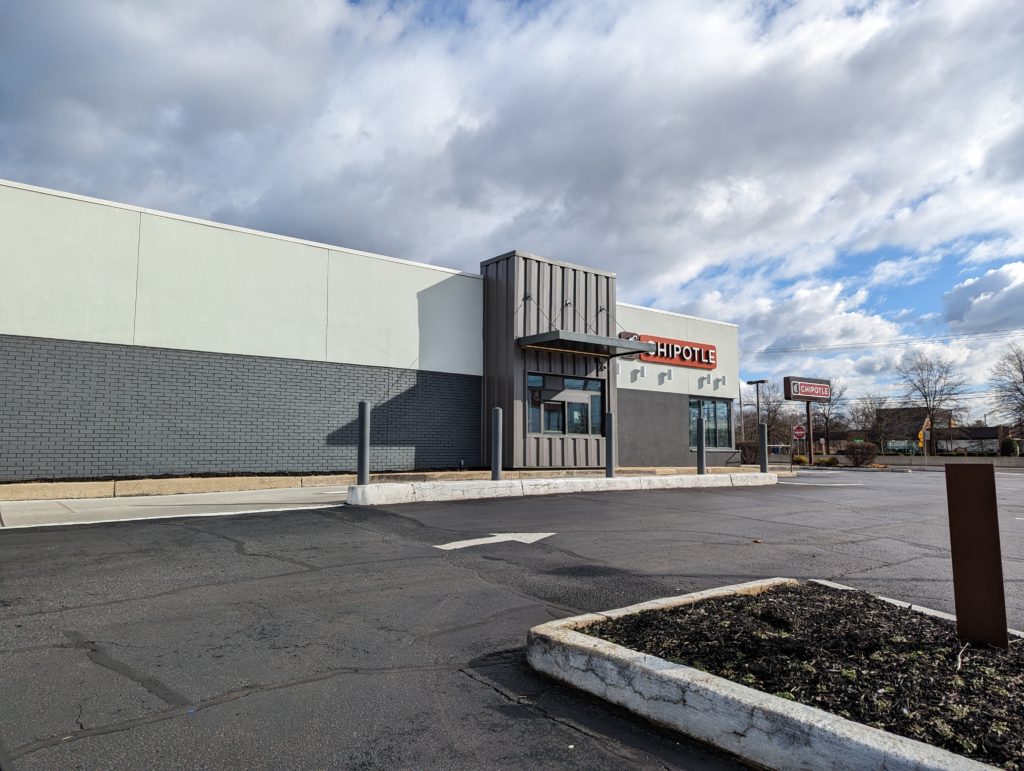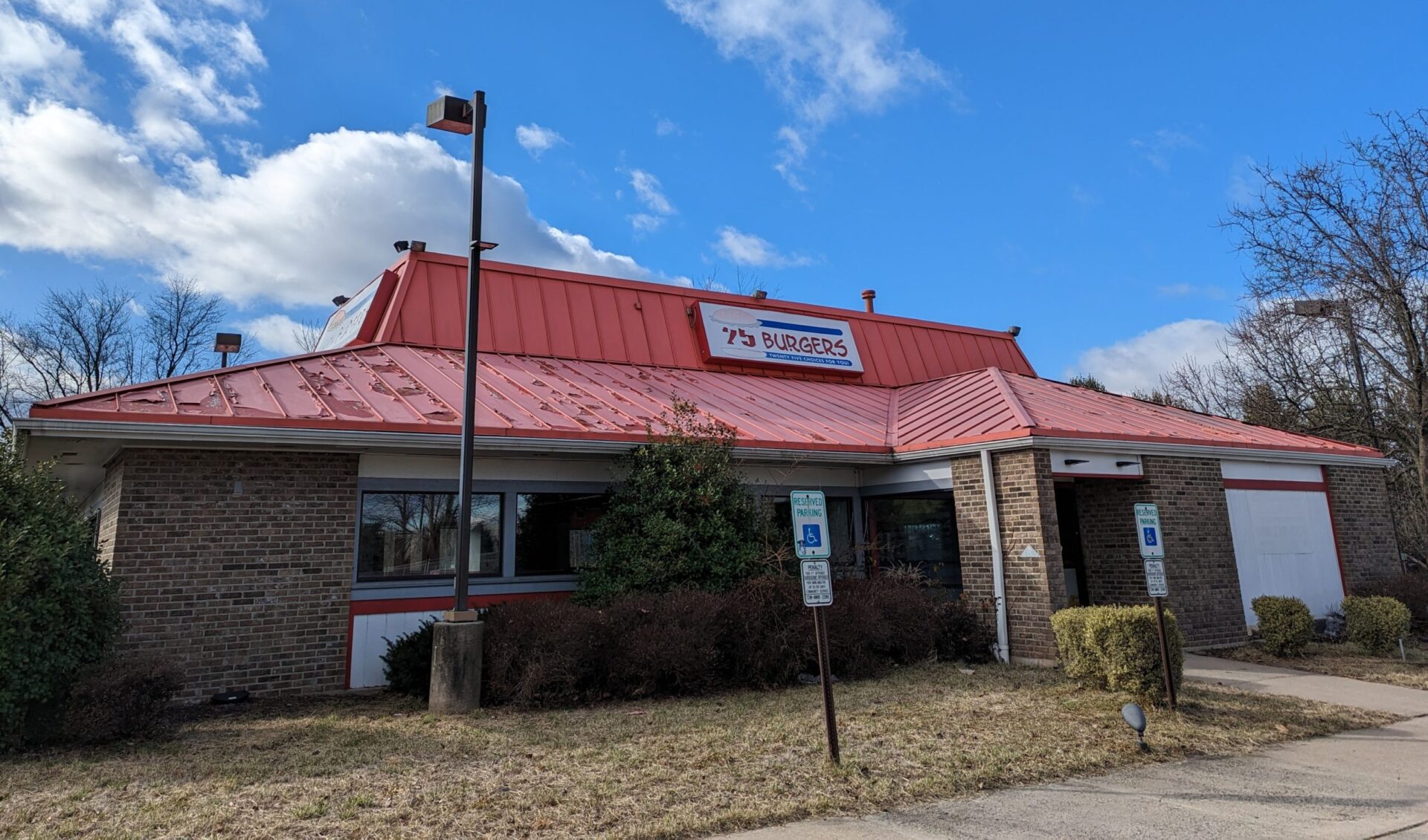By PATRICK LAVERY
You’ve seen them. They masquerade as churches, funeral homes, radio stations, pharmacies, even – blasphemy! – other restaurants. But they all have one thing in common.
They used to be a Pizza Hut.
Now, it may be true that no one out-pizzas the Hut, but the huts themselves have slowly become outmoded relics over the past two to three decades when it comes to the chain’s business model. In that time, the take-out option that was always an alternative to sitting under the red, trapezoidal roof has brought Pizza Hut closer in spirit to its main competitors Domino’s, Little Caesars, and Papa John’s.
It’s now common to see Pizza Hut paired in strip malls, airports, or rest stops with its chicken companion, WingStreet, or Yum! Brands stablemates KFC and Taco Bell.
But simultaneously, the exoskeletons of old Pizza Huts have had new life breathed into them by a variety of opportunistic local business owners, and Americans have taken note: The blog “Used to Be a Pizza Hut” has more than 10,000 Twitter followers, and some of its submissions were featured on The Tonight Show Starring Jimmy Fallon.
It’s a viral and quirky way of looking at things, but it’s an important microcosm of a trend.
At the very outset of the COVID-19 pandemic in the spring of 2020, the National Association of Realtors published its “Case Studies on Repurposing Vacant Retail Malls,” saying in part that these vast vacancies “contribute to urban decay, declining property values, and lower tax revenues.”
Given the ensuing massive hit to the in-person retail community, it stands to reason that the concerns NAR had three years ago still stand despite reports of malls continuing to be overrun on occasion, such as day-after-Christmas deals.
What the ghosts of the stores inside these malls may eventually become, whether in 2023 or later, is dependent upon demand and the bulk of the action will be in the least risk-averse areas of development: industrial and multifamily, with just an “embryo” beginning in retail, according to Doug Ressler, manager of business intelligence for Yardi Matrix.
“These people have not been sitting still; they’ve been adapting,” Ressler said. “That’s very prime land, the land is very valuable, and people are looking at that to be able to reuse it.”
You have probably seen how some vacant spaces are reused.
And chances are, by this August or September, you’ll notice a prime example close to home.
That’s when Spirit Halloween typically sweeps onto the scene, opening an average of 1,450 pop-up stores the retailer operates annually.
Nikki Balles, Spirit Halloween corporate director of public relations and communications, told New Jersey 101.5 last year that Spirit’s own employees know full well its autumn ubiquity makes it one of the “most meme-able” companies. Barely had the ink dried on the announcement that the record-setting Broadway production of The Phantom of the Opera would be closing in early 2023 when Twitter went to work on the prospective new tenant of the Majestic Theatre.
Restaurant chains have adapted as they expand.
In Flemington, N.J., at a major intersection with U.S. Route 202 and State Route 31, stands a Chipotle Mexican Grill that until the start of the pandemic was a Boston Market offering sit-down, take-out, and drive-thru.
Having a drive-thru lane seems practical for a Boston Market, which has enough of a mains-and-sides style menu to function like a fast-food joint when drivers pull up to the window. But it might not initially make sense for Chipotle, where meals are made to order by design.
That’s where the Chipotlane comes in, and in many ways, it’s a signal of retail adaptability that predates the pandemic.

What is a Chipotlane?
The company opened its first Chipotlane Digital Kitchen restaurant in December of 2021, and for starters, you can’t actually place a scratch order there. Whether on Chipotle’s website or app – or through a meal delivery service like GrubHub or Uber Eats – the order is fully made online and then the recipient simply drives through and picks it up.
Company representatives explained that in late 2021 that newly opened restaurants with a Chipotlane reported 15% higher sales than new locations without one.
Chipotle didn’t provide a breakdown of how many Chipotlanes were created from the remains of other restaurants’ former drive-thrus but has said that it’s converted at least a dozen of its existing locations into being Chipotlane-compliant.
Out of more than 200 new Chipotle locations that opened in the United States, Canada, and Europe in 2021, roughly 80% of them had a Chipotlane.
So the next time a karate school opens in an old deli, or what was once a bank is now a burger joint, don’t bat an eye.
Chalk it up to ingenuity – and expect to see more of its like as consumer needs and attitudes continue to change.
“It’s probably the ‘next normal,’ as we say, not the ‘new normal’ but the next normal, because it was already beginning prior to the pandemic,” Ressler said. “What it puts in is vibrancy within the community. ‘I want to be able to walk to fill-in-the-blank, and I want to be able to have retail and goods available to me.’”
Ressler said companies across America have been thinking about how to respond to changing consumer tastes for some time. Astute investors are responding by looking at the valuation of their assets and asking what they can support, he said.
Investors should remember that location matters.
According to the 2023 Commercial Real Estate Outlook by Al Brooks, head of JP Morgan Chase Commercial Real Estate, a retail property’s future depends on location and retail category.
“For example, people still want to shop at a grocery store for certain items, pick up prescriptions, get a haircut or grab coffee. Neighborhood shopping centers in well-populated residential areas continue to perform well,” Brooks wrote.
Brooks wrote that retail in city centers has been slow to bounce back as rents are higher in urban areas and fewer people are working in downtown offices after pandemic-related changes due to health concerns.
Follow Us On Twitter:
Editor Kimberley Haas has been interviewing some industry leaders. Listen to this podcast highlighting the successes and innovations taking place in today's challenging market. https://t.co/47WjyvfKga pic.twitter.com/VqbTRu4Of7
— The Mortgage Note (@TheMortgageNote) January 13, 2023
Read More Articles:
Single Women More Likely To Own Homes Than Single Men In Nearly All States
The Hangover: Staffing Cuts And Enhanced Efficiencies Are On The Docket For Lenders In 2023
Sellers Feel The Pain Of Price Drops
